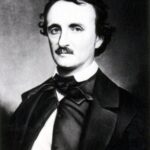Robert Frost poems are singular for their deceptive simplicity. Though at the surface, they appear to be simple poems on nature, they signify something deeper. This is achieved by deft use of symbolism. “The Road Not Taken” is no exception in this regard.
The Crossroad Symbolic of the Turning Point in Frost’s Life
Robert Frost’s “The Road Not Taken” was first published in The Mountain Interval in 1920. The ‘road ‘ has been predominantly used as a symbol for the journey of Life. However, it signifies not only journey but also the destination. The metaphor of the road is used persistently in the poem , and is therefore an extended metaphor. A crossroad functions as an evocative metaphor for a vital decision. The road in question is situated in a wood.
The title implies that Frost gives more significance to the aspect that he had not taken any of the specified roads. The popular perception is that Robert Frost had taken one of these two roads that function as two alternatives. Rather, he traverses the middle path. Frost was always caught between two worlds: that of being a teacher and a poet; between reality and imagination. In the prescribed poem, he ruminates over which vocation to pursue, that of a poet or a teacher. He finally arrives at the decision that one can be a poet and yet teach; one can be a teacher and yet philosophize. Thus, he does not take specifically any one of out the routes, but traverses the middle path.
At the outset he comprehends that he is sorry could not travel both : “And sorry I could not travel both/ And be one traveler.” His first impression is that it is not practical. He first ruminates over traveling on the first road, and then talks of the second road. It is generally conceived that he took this particular(second) road. But he also mentions that the path was worn out due to constant use; and toward the end of the poem he mentions that he took the ‘road less travelled. It implies that he did not take the second, as that was the one commonly used. He categorically states that he kept the first for another day. Therefore, he eventually took the middle path. Hence, the title “The Road Not Taken.” The greatest evidence for this is Frost himself: poet and teacher. Had he taken any one of the popular roads, the poem would be entitled “The Road Taken” .In “The Road Not Taken”, Robert Frost may also allude to his shuttling between imagination and reality. Here also, he adopts a middle stand. He lives a practical life, yet his imagination manifests itself in his writing.
What the poet shows through “The Road Not Taken” is that decisions in life cannot be specifically organized into logical alternatives or mathematical units. Sometimes life is beyond logic,categorization and mathematical division. The decision is indeed unique, this is why he states:
“And that has made all the difference.”
Other Symbols in “The Road Not Taken”
The concept of two choices is a thought-provoking one.The model of two choices renders one wrong and the other right. If not, one is considered superior to the other. At another level, one is considered default and natural; the other unnatural and deviant.
Robert Faggen states “This psychological representation of the developmental principle of divergence strikes to the core of Darwinian theory. Species are made and survive when individuals diverge from others in a branching scheme, as the roads diverge for the speaker. The process of selection implies an unretracing process of change through which individual kinds are permanently altered by experience. Though the problem of making a choice at a crossroads is almost a commonplace, the drama of the poem conveys a larger mythology by including evolutionary metaphors and suggesting the passage of eons.”
The image of woods signifies ‘indecision’ as the poet is lost in the same searching for answers.The image of ‘woods’ has stood for indecision in Frost’s other poems too. A few instances are “Stopping By Woods on a Snowy Evening”,”Birches” and “Mowing.” The image of ‘woods’ also stands for instinct as opposed to civilization. The poet may be in quest of his instinct in such a situation to arrive at a final decision.The yellow color of the woods points to the season of autumn. Autumn is symbolic of incipient decay and stagnation. The poet also experiences a sense of stagnation as he cannot progress forward to make a decision.
The road that is caught in the undergrowth indicates the road entangled with obstacles. This is the first road , therefore people took the second one as it was easier to traverse.”The second path is grassy and wanted wear”: The poet implies that it needed to be pruned. The ones who passed by that route had worn it out further. What Robert Frost implies here is that the practice of teaching had been made crude by teachers themselves; they did not attend to the profession out of love for the vocation and sincerity in fulfilling their duties. The path was taken just for the sake of it. The ends was the means, in such a stance. According to the poet, sometimes the journey itself is the destination.
The phrase “Somewhere ages and ages hence” signifies that many years from now the whole experience will come across as a fairytale experience, as it will be complex to digest.The words also point out it to be a future anecdote to recite to generations to come. In such a case,it would function as an example. The relevance of the situation, in spite of time and space separating the two experiences, points to its universality.
“And looked down one as far as I could: implies that his looking at the road was not merely superficial. There is a lot of insight and contemplation involved in his decision, as echoed by the word ‘far’. The words “Way leads on to way” symbolizes the poet’s bewilderment, how he is caught in a maze with regards to decision-making. And finally, the image of a forked road also evocatively signifies the image of one keeping his fingers crossed; that is, the poet hopes for a positive outcome.
The poem thus reveals a major turning point in the life of Robert Frost.It ends on a note of satisfaction,with a sigh. Frost maintains that his decision based on Self-reliance has made all the difference (in his life).The traveller in the poem is, therefore, Frost himself.The journey is the journey of life. Frost himself warned “You have to be careful of that one; it’s a tricky poem – very tricky.”
References
- Faggen Robert . Robert Frost and the Challenge of Darwin. Ann Arbor: U of Michigan P, 1997.
- Lawrance Thompson, ed. Selected Letters of Robert Frost. New York: Hold, Rinehart and Winston. p. xv.
- http://www.loc.gov/pictures/item/96504228/resource/


